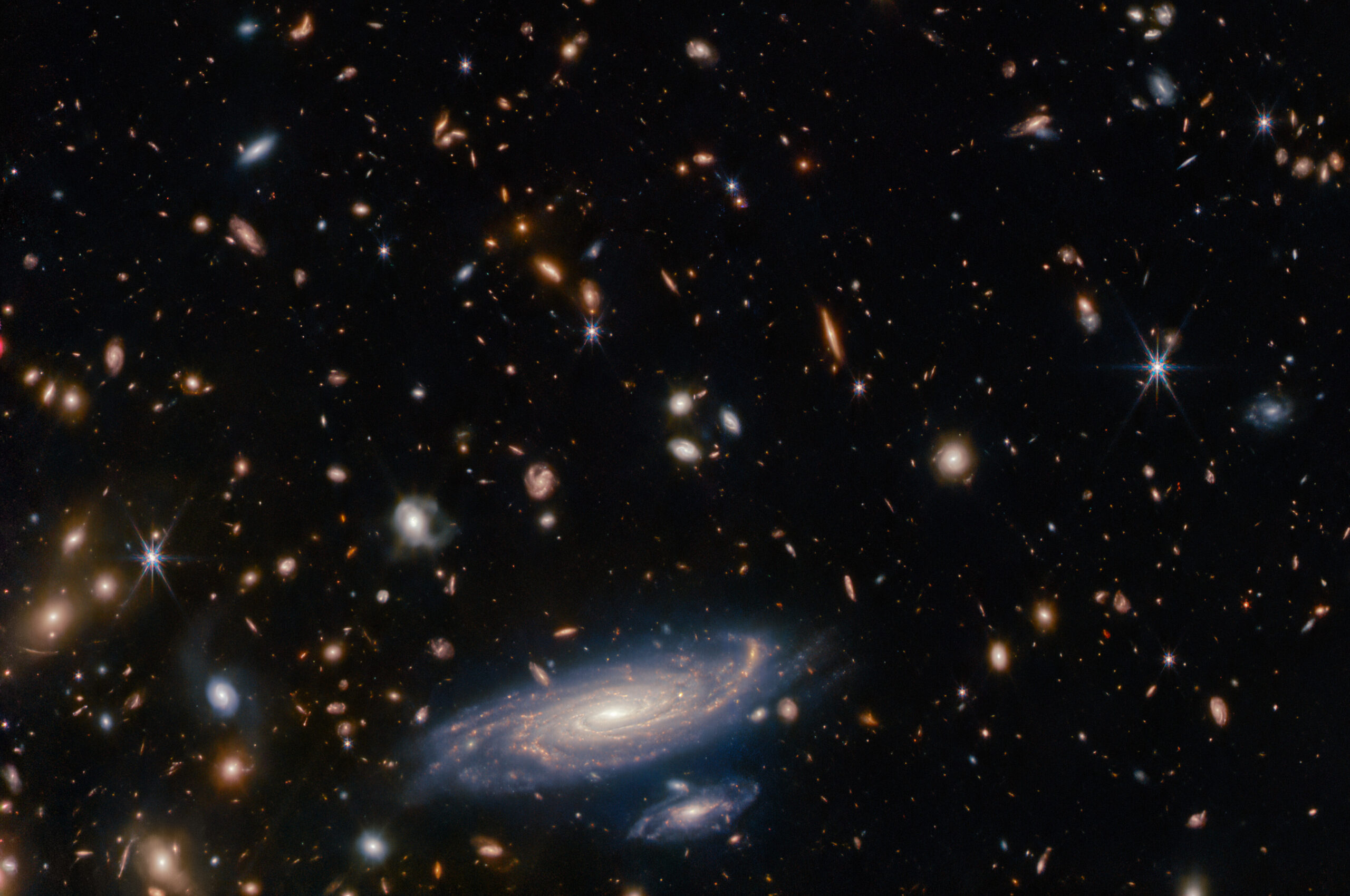Planck was a space-based experiment to measure the fluctuations in temperature and polarisation of the Cosmic Microwave Background. This talk will present an overview of the most recent Planck data and results and their impact on cosmology and astrophysics. In particular the “game-changing” aspects will be discussed, such as how Planck has shaped our understanding of the Lambda-CDM cosmological model, and how it has revealed new facets of the galactic interstellar medium.
Planck was ESA’s/Europe’s first mission to study the Cosmic Microwave Background, the relic radiation from the Big Bang, which occurred about 14 billion years ago. As the early universe expanded, it cooled, and at a time called ‘recombination’, it had cooled sufficiently for electrons and nuclei to combine and form atoms. At this time the light that had been bouncing about within the plasma became free to travel through space – as if the universe had switched from being opaque to transparent. This freed light was initially energetic, but with the continued expansion of the universe, what was once a searing fireball of radiation has since cooled to become a background sea of microwaves. Planck measured the temperature variations across this microwave background with much better sensitivity, angular resolution and frequency range than any previous satellite, giving astronomers an unprecedented view of our Universe when it was extremely young, just 300 000 years old.
Planck had been selected in 1995 as the third Medium-Sized Mission (M3) of ESA’s Horizon 2000 Scientific Programme, and later became part of its Cosmic Vision Programme. It was designed to image the temperature and polarisation anisotropies of the Cosmic Background Radiation Field over the whole sky, with unprecedented sensitivity and angular resolution. Planck is testing theories of the early universe and the origin of cosmic structure and providing a major source of information relevant to many cosmological and astrophysical aspects. Planck was formerly called COBRAS/SAMBA. After the mission had been selected and approved (in late 1996), it was renamed in honour of the German scientist Max Planck (1858-1947), Nobel Prize for Physics in 1918.
Planck was 4.2 m high and had a maximum diameter of 4.2 m; the launch mass was approximately 1900 kg. The spacecraft was lofted into space in a double launch, together with ESA’s Herschel space telescope, on board an Ariane 5 EC launcher on 14 May 2009. The minimum requirement for success was for the spacecraft to complete two whole surveys of the sky. In the end, Planck operated for about four years, and carried out up to eight full-sky surveys.
The Planck telescope was an off-axis tilted Gregorian design with a primary mirror measuring 1.9 m × 1.5 m and with a projected aperture of 1.5 m diameter. The 1.1 m × 1.0 m secondary mirror focused the collected light onto the two scientific instruments, the LFI (Low Frequency Instrument) – an array of radio receivers using high electron mobility transistor mixers – and the HFI (High Frequency Instrument) – an array of microwave detectors using spider bolometers equipped with neutron transmutation doped germanium thermistors. Able to work at slightly higher temperatures than HFI, the Low Frequency Instrument (LFI) continued to survey the sky for a large part of 2013, providing even more data to improve the Planck final results. After completing seven sky surveys, and upon exhaustion of its helium coolant, Planck was switched off on 23 October 2013. The high-quality data the mission has produced will continue to be scientifically explored in the years to come.
Jan Tauber is ESA Planck Project Scientist. Initially Tauber studied electrical engineering and worked in industry for a couple of years, before starting a PhD in radio astronomy at the University of Massachusetts, which he completed in 1989 with work on submillimetre-wave instrumentation and models of the structure of the interstellar medium. Until 1992, Tauber was a Postdoctoral Research Fellow at the University of California at Berkeley (USA), where he worked mainly in astronomical millimetre-wave interferometry. Tauber joined ESA as a scientist in October 1992 initially working with balloon-borne experiments. He was assigned Study Scientist for Planck in 1993 (the mission was called COBRAS/SAMBA back then). He has been the Project Scientist for Planck since its selection in 1996. Since 2017, he is Study Scientist for SPICA, a mid- and far-infrared observatory which was a candidate to become an ESA medium-sized mission.
Seminar was recorded on November 26, 2020
